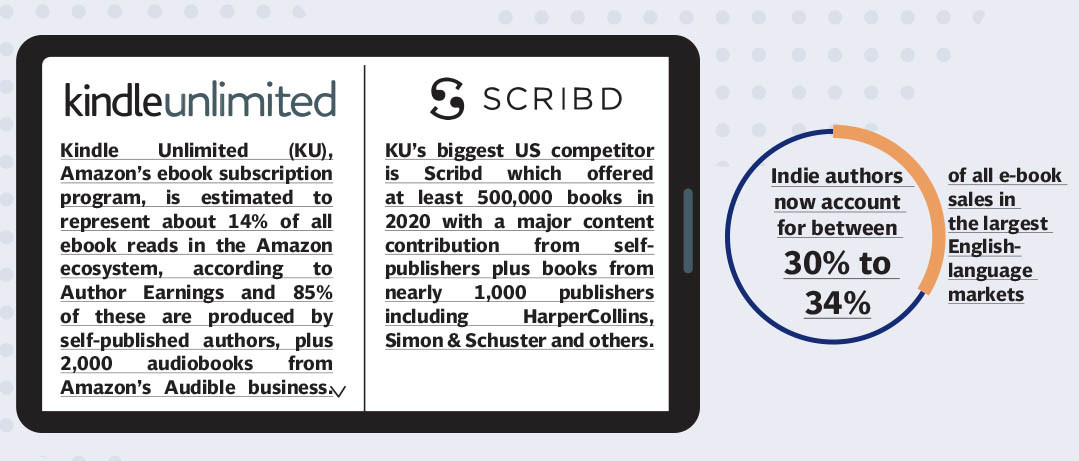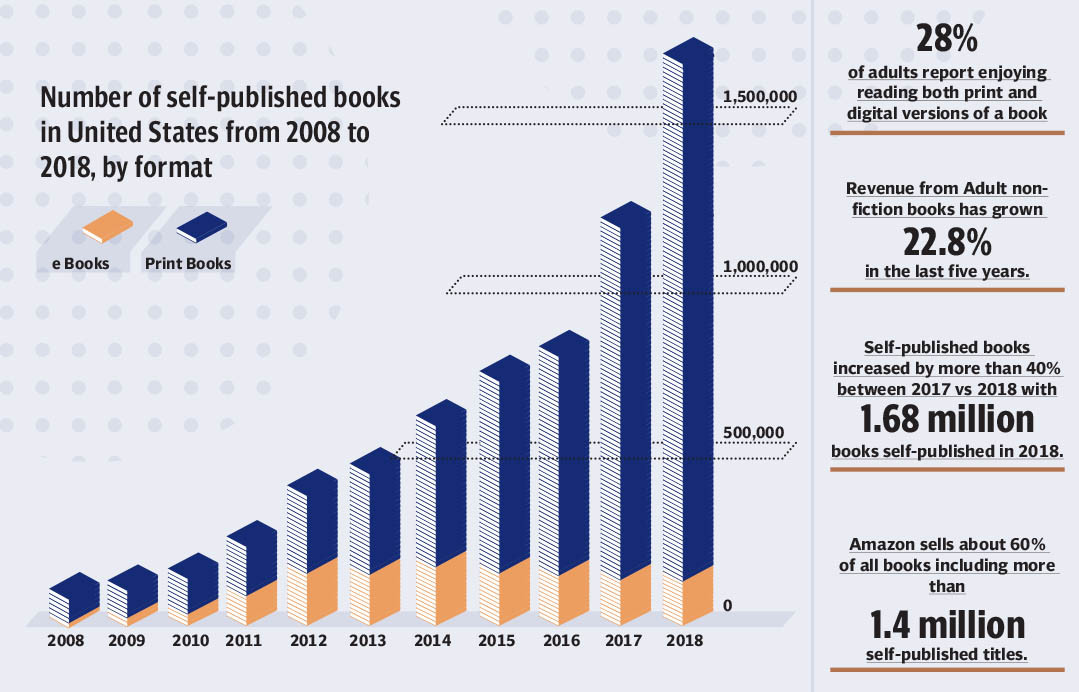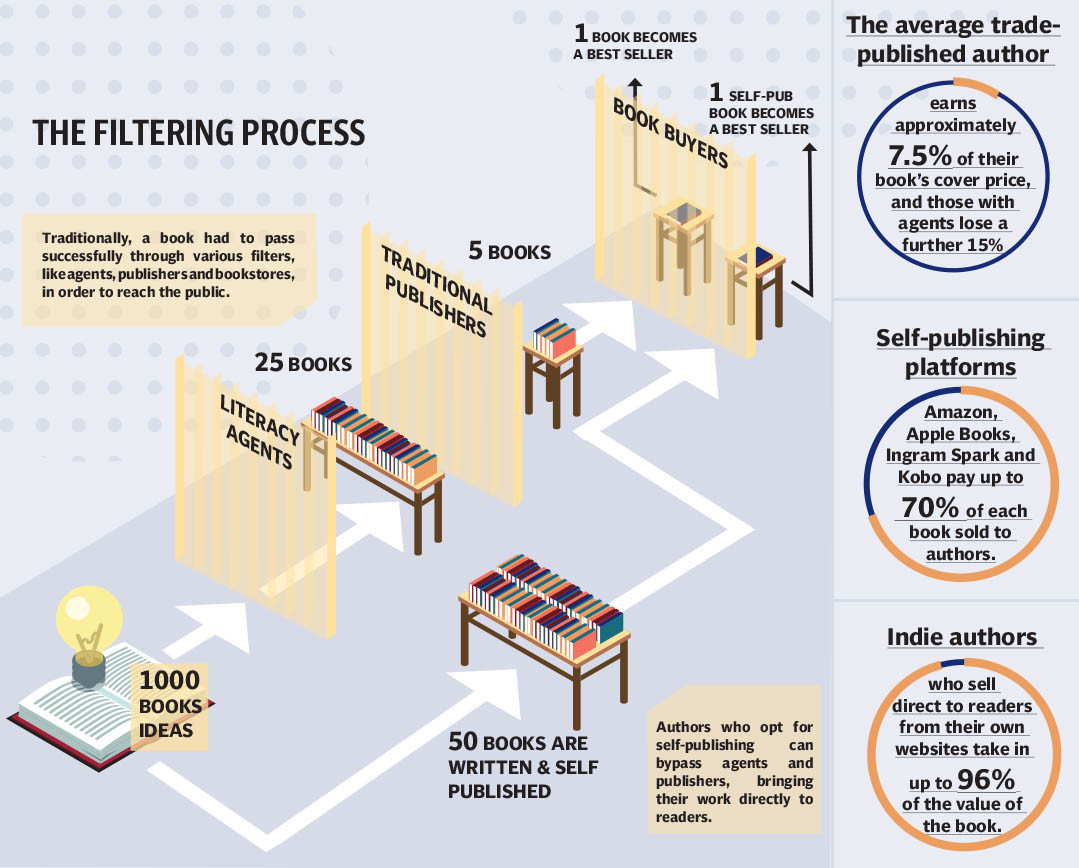For a reader, choosing a book of your choice is a difficult task. The book that suits your mood, interest, story and author. Sometimes you need a book that piques your curiosity and stokes your imagination.
As a writer, penning your work is about ideas and a narrative. Whether fact or fiction, it’s a conscious decision to decide what journey you’d like to take your reader on. To tell this story, you need a publisher. But again, going for a publisher means edits in your story. This is when you decide to publish the book on your own and become a self-publisher.
Self-published, indie or independent authors are those authors who decide to complete the entire publishing process, including printing, editing, proofreading, formatting, cover design, and book marketing on their own or with their own resources. This all is done without taking any help from the traditional publisher or a publishing company.
The culture of self-publishing in the world gained popularity in early 2007, but in Pakistan, the trend is still developing. Many young authors who were frustrated with the gatekeepers (publishers) suddenly saw an opportunity to self-publish a book. Opting for the traditional route means that the publisher's team takes care of many of the hassles, while for a self-publisher, all of the work on their own. However, some of the advantages that self-publisher has include creative control, higher royalty rates, less waiting, and a chance to make your name.
The Express Tribune talked to some of the young and aspiring self-published authors who shared their stories of becoming self-published authors, the challenges they faced and the pros and cons of self-publishing.
A 16-year-old Pakistani author Maryam Arif, who is the youngest author of the country, started off writing when she was 10 years old, and today she has eight books to her name. She wrote poems for Young World magazine and began her first book 'How to Cure Cancer at Home Level' at 14. Just a year later, she wrote seven more books.
“I opted to self-publish [my work] so that I could have more control over my books, have higher royalties, and design my book as I want,” said the Karachi-based author Maryam, who published her book on the international platforms Amazon, Lulu Press and Smashwords.
Talking about the challenges, she said that there are few English book publishers in Pakistan, which gives authors limited options and forces the author to go for international platforms.

Designing the book’s cover through a professional designer, getting the book edited and then printing and marketing the book can cost a lot for the self-published author. Maryam termed this as one of the biggest challenges to become an indie author. “If you can do all of the stuff yourself, then self-publishing is the best option, but if you have to get the services of others, then you need a good amount to support you in the beginning,” she said.
Another Pakistani author, Sijdah Hussain, who used international platforms for self-publishing, believes that there are not many traditional publishing options in Pakistan nor publishing agents. “When it came down to it, I preferred self-publishing over vanity publishing. I knew my book had an audience out there. The vanity publishers here act like traditional ones when it's about publisher rights and monetary advantages, but we still have to pay them a good sum for half the number of books that I can get printed if I go to the source, i.e. a printing house, directly,” said the author of the book 'Red Sugar, No More'.
Another writer Sarah D Fawad, who has a Masters in English Literature, is the author of ‘How (not) to be a Good Housewife’ and ‘Desi Distancing,’ says that she opted for self-publishing because of the lack of publishing houses in Pakistan. “I got my debut novel published in collaboration with an Indian publishing house, but I wanted to get published in my country the second time,” she said.
So this shows that when an indie author finishes its first book, they often face an important question: whether to try their luck with traditional publishing houses or pursue self-publishing.
Creative control

For new authors considering publishing options, self-publishing brings both gains and drawbacks. One of the advantages of going the self-publishing route is having complete control over your own book. The traditional publishing route is full of gatekeepers who will have their opinions on the content, title of your book, and even the book cover. Whereas, indie publishing allows one to have complete control over the book.
Sijdah was also one of the publishers that went for self-publishing to have control of the content. She tried a publisher that had university students for their editorial panel and didn't understand free-form and the reason behind her book's different writing style inclusion.
“I understood that not everyone will understand the style and formatting I presented. After some time, I edited the book again, put in even more effort by adding graphics and ensuring a 100 per cent in formatting and figured that I didn't want to give any vanity a share of the appreciation for charging me for my work and promoting themselves on it,” said Sijdah who was a literature student.
Another writer Tayyaba Amir, a mathematician by profession, teacher and mother of three, started writing when she failed to find the literature for her kids that she wanted them to read. “The market is full of Roald Dahl, Enid Blyton, J K Rowling, Diary of a Wimpy Kid, but when I looked for the similar topics by Muslim authors, I failed. On demanding books by Muslim authors, even my children's school's library mentioned only Qasas-ul-Anbiya," she said.
“That's not what children want to read nowadays. They love adventure, fantasy, thrillers. That disappointment worked as a catalyst for my writing journey. I wrote a novella named 'My Annoying Mom', and it was liked not only by children but their mothers as well," she added.
Her other clash was with the Disney Princesses. To correct this obsession of becoming a princess, she wrote and illustrated 'Marium Wants to be a Princess', which was liked by her kids. She wrote her other thriller, 'The chronicles of Deosai' for young adults.
“The reason for self-publishing my first book was that in Pakistan, there are only a couple of names as publishers, but they don't give a chance to new authors. And internationally, no one accepted my manuscript. So I just thought to give my book a try on my own, hence self-published," she added.
Less Waiting

Once the authors are done with the hard work of writing the book, they are eager to see it online and in bookstores. The time between the final copy and the finished, sellable product can be less than a week for a self-publisher. For the e-book to be uploaded to digital marketplaces, it can take less than six hours, whereas the print on demand (POD) services can be available 24 hours.
An author Maliha Tahir, a doctor by profession, reads, writes and draws art in her free time. She opted for self-publishing her book, ‘My Vibrant Musings’ as she wanted to publish her book quickly and didn't want to wait for the publishers' responses, which take a lot of time. Additionally, she knew she would face hurdles if she opted for the traditional pathway in Pakistan.
Higher royalty rates
If an author goes for a traditional publishing deal, the royalty rates usually float between seven and 25 per cent. For indie authors, that number is closer to 70 per cent. This means a self-published author can potentially make a more significant amount of money than the traditional publishing process considering the same number of book sales.
Stating the hurdles that lead an author to opt for self-publishing, Sijdah said that there are few publishers with book stores, but they will only take on authors who have already succeeded and give back six to 10 per cent of the profits as royalty, making an author think that they should be thankful for it.
Make the name of yourself
It is not possible to become a bestselling author overnight. It will be more challenging if you're a first-time writer. On the other hand, publishing your book as a self-publisher can help you attract a fanbase and a chance to prove to the publishers that you are a good writer. Therefore, self-publishing was a start for many successful authors.
Discussing the challenges faced as a new writer, Sijdah said that there isn't a lot of readership in Pakistan and the readers don't always welcome new writers if they self-publish. “If people don't know me before my book comes out, they probably wouldn't give my work a chance. I did plan a marketing campaign for my book because even if I did pay the local publisher ‘Daastan’ for a full year of marketing. They weren't going to cover my book every day, of course,” she said.
“However, I was getting a genuine readership even from areas far away from my home city. My book travelled the entire country and outside too, thanks to Amazon's KDP platform, and I decided on holding off any publicity for now,” she added.
She further said that with the traditional publishers, there will be no logo taking away your rights of the book and monetising on it, all the while offering you a meagre six to 10 per cent royalty.
Less Visibility, Higher Cost

At a time, when there are many advantages of self-publishing, there are some disadvantages too. On every step, the writer has to review for any possible error. As Sijdah pointed out that getting the proper marketing is really a complicated process for a person alone. The publishing house has a specialised team for marketing, and they can make the book's visibility quicker than an indie writer. Plus, the big publishing houses increase the chances of critical acclaim, literary prizes, and your book becoming a bestseller. If your aim is to become a big name, it will be tougher to achieve that through indie publishing.
The cost of getting the book published is a bit higher if you opt for self-publishing. And if you are not an expert in all of the steps and have to take the help of experts, then this will cost you even more. Self-published authors will have to hire freelance designers, editors, marketers and other resources required. Whereas traditional publishers have all these resources in one place, and that can cost low.
“If you go to any of the vanity publishers here, they will charge you for each side of the page in the book at the rate of three to five rupees. They will tell you how binding is expensive, and the page quality would be top-notch. Still, if you go to a printing house and get it done on your own, your prices will be cut down in half,” she said, adding that self-publishing also has the edge over traditional publishers as for indie publishers, everything comes back to the author, and they can dictate the page quality, book size and even check the sample copy to ensure everything is as per their formatting style.
Tayyaba also seconded Sijdha saying that to meet the standard, editing is a must and it can't be done without spending, then designing is another investment, and on top of it all, an author also has to search for printing services. “To find genuine persons for these tasks is another hassle. For me, while it was exhausting, it was still an interesting learning process,” she said.
Process of self-publishing
If a writer wants to see his or her book succeed, the definition will be to see the book in a major bookstore. But as the traditional publishers often have exclusive deals with major publishers, it becomes difficult for a self-published author to penetrate significant bookstores.
The self-publishing process in Pakistan is different from other countries as there are not many big publishers who support self-publishers. Sijdah, while sharing her story, said that for her, it was all about the writing. It took her over three years to compile her book and format it to accuracy. She wanted to ensure it didn't support cultural appropriation or talked about the problems of any group that she is not directly related to. “It's focused on mental growth - plain and simple - and talks about acceptance and fighting your demons,” she said.
Her self-publishing process was more focused on ensuring the content quality and not trying to present it as a narrative for any other class. “The process should include your work being complete and its edits, lots and lots of edits. Once you're satisfied with it, publish via Amazon for e-book or paperback printing or apply for an International Standard Book Number (ISBN) at the National Library of Pakistan. The reason being that is Pakistani readers can't order your paperback via Amazon without spending at least three times the amount of your book on its shipping. It will discourage them,” she said.
She suggested that it is better to get some copies printed for your readers here with a new ISBN or talk to the Amazon representatives about using the same ISBN they offer before doing it. “Don't forget to add your copyrights and ISBN to your books. They are essential,” she added.
Self-publish services
There are four services for self-publishing in Pakistan, including; Thazbook, Daastan, Auraq, and Parestan. You just pay them for all the hassles and get your book in your hands.
“I had contacted many platforms for self-publishing. Most were very expensive for me. I had contacted Auraq publishers, Dastaan, and some others,” told Maliha while adding that Thazbook was not too expensive and more flexible, leading her to choose them for her book, which is a collection of pictures painted and annotated with the utmost care and dedication that are fused with the thoughts that they provoke.
Many of the self-published writers have motivated others to opt for self-publishing after watching the success. Maliha is one of them who, after publishing her book, many of her colleagues who like to write asked her about the process, and one has recently published her own book. “I think self-publishing is growing in Pakistan since it is easier and less time-consuming. One only needs some money, passion and some hard work.”
